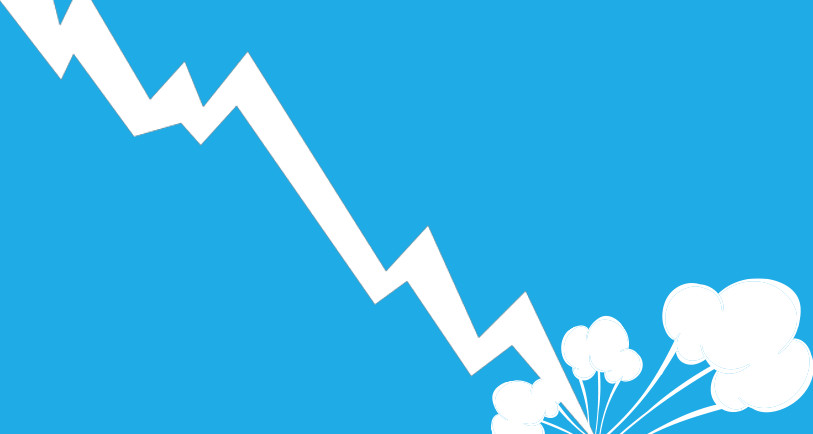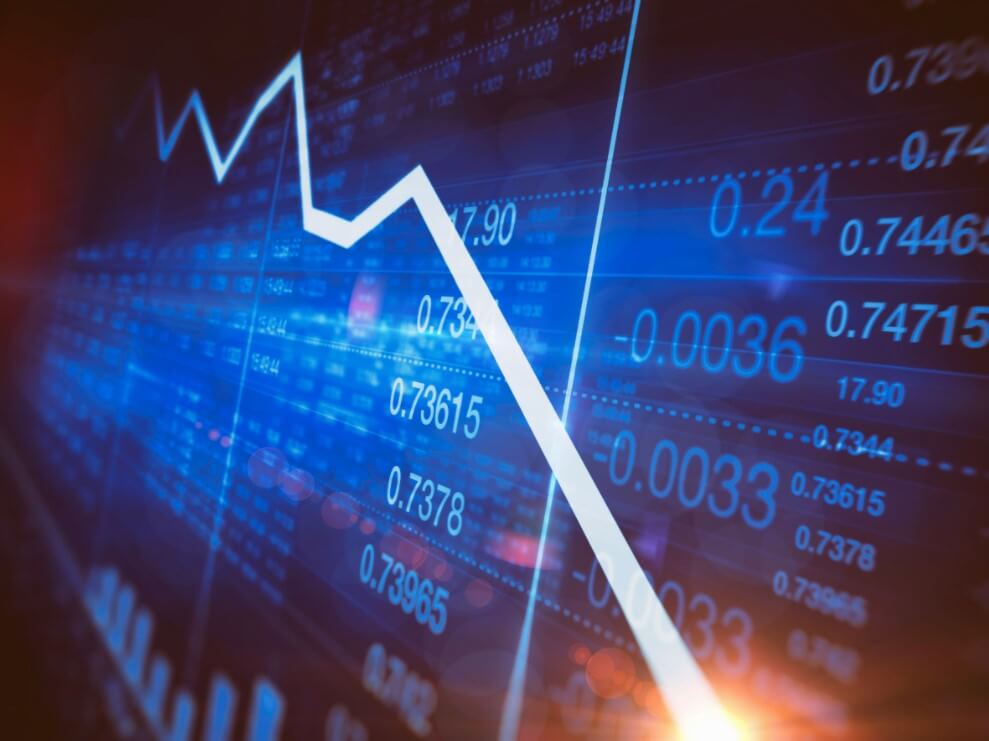I have seen in several forums that many investors practice the risky sport of averaging down. This strategy is nothing more than investing more money every time the stock/ ETF/ Fund, etc goes down, so we get a reduction in the initial cost by buying more shares at lower prices.
This strategy has several problems…
– Each time we average to lower the average cost we add more money, therefore we add more risk.
– “Money Management” or money management strategy is a martingale (I buy when I lose, that is when I lose). This strategy is perfect when our capital to invest is infinite, which is not very likely.
– It is not recommended unless you know how to do it, because if you do not do the strategy well or do not choose the underlying well, the losses can be very painful.
– We are invested in a broad ETF (there are many companies and good ones) and the ETF has downward swings because of the feeling of the market, and not because of the quality of the companies that compose it, so it is an inefficiency that we could take advantage of if we have liquidity.
– Exactly the same as the previous point but with an individual company. Here I have to say that you do not do it, do not lower your average in individual companies, unless you know how to read a balance sheet and trust very much in your judgment that the company is good and will continue to make profits.
If you still want to average down we’ll see how we can do it. The example I am going to give with a company, and this example can be extrapolated to an index. The company XZY is a large company, what’s more, I would say it is a very large company, with annual dividend increases of around 7% on average, improved margins has an impeccable balance sheet, etc, etc, etc. Ultimately a really good company with very little chance of going into losses, although this is never 100% reliable.

Once we know that the company is very good and its balance sheet is difficult to get worse enough we want to enter it to take advantage of its current price and be able to get quite good returns. The intrinsic value of the stock is €100, and it is currently listed at €60, so it is trading at a 40% discount. I think it’s enough of a discount to go in and have a good long-term return.
I have 10,000€ to invest in the value, and at 60€ I will buy 100 shares of the company, so I will invest 6,000€ initially. Now, because of the current market situation, because of the phase of the cycle in which we are, because the political situation of the country is this or that, etc… it is likely that the market will punish the quotation and we will see it below, even though it is an incredibly good company, which gives us the possibility to buy more shares (more risk) in exchange for lowering the average cost (more profitability) and when quoted at prices close to its intrinsic value, get a few more points of profitability.
Then let’s try to figure out what a super price would be. The super-price is the price at which the company is a very clear investment opportunity and will give us really good long-term returns. For our example I estimate that a super-price for the company is 40€ per share, that is, we shouldn’t care if it goes any lower, because at the price I buy the company, earns enough so that the money invested in it has all the possible guarantees of getting the full return on my investment plus high returns.
At this point, I have 4,000€ in liquidity and a difference of 20€ between the current price of the stock and my super-price. Now the price difference between the current quotation (60€) and the super-price (40€) we have to divide in equal parts, and in the same way our capital in liquidity. Therefore we can divide our capital into 4 parts of 1000€ each and the 20€ difference into 4 parts of 5€ each and in this way we already have the levels in which we will invest additional 1000€ each time the quotation drops 5€ and we will have enough liquidity until he goes down to our super-price.
A rule for you to do well is not to average a price that is less than 8% difference between the initial purchase and the next purchase to average, that is, I will not buy the company at 60€ and at 59€ I will re-invest. Such a small difference between the different prices will not excel in the returns of this long term. In the example I have explained the difference is greater than 8%, so it compensates for the risk with the possible long-term reward.
If instead of having bought 6.000€ initially we had bought less, 3.000€ for example, we would have 7000€ in liquidity to average, we would again divide the difference between the current price and the super-price and divide it into 3, 4, 5 equal parts (to the taste of the investor) and buy when it comes at the price we agreed. This is the standard way of averaging.
We can also increase or decrease the risk by doing the average in different ways…
– Increase the risk: Instead of dividing our capital into 4 equal parts I will give more money to the latest purchases, for example: Instead of buying 1,000€ each time I lower 5€ the quotation, the first 5€ I lower (the quotation would be 55€) I will buy 500€ only (I have left in liquidity 3,500€, the second purchase at 50€ I buy for 800€, the third for 1200€, and the fourth and last for 1500€.
– Reduce the risk: Exactly like the previous point but in this case, the first purchase to average is the most money we invest, and the last one the least, we would invest 1500€ first when the quote reaches 55€, 1200€ when it reaches 50€, 800€ when it reaches 45€, and finally 500€ when it reaches 40€.
By reducing the risk, I am not referring to the operation in general, but to the strategy of averaging downwards. Another day we will talk about selling a part of the portfolio to reduce the risk of the transaction in general.

-It is different from the average if we invest 6.000€ in the first purchase than 4.000€, the more money you invest in a certain price, the more the average cost will approach this.
– We can use the 3 ways of averaging, we just have to know what our profile is and if we will find ourselves doing this high-risk strategy.
– Never weigh at prices below 8% distance between several purchases. The risk does not compensate for the reward.
– It is not the same as a super-price for our example of 40€ that 59€, here it is clear that I will not average, it is not higher than the minimum 8%.
– In companies it is very risky, I would not advise you, you must be almost professional to do it in companies. In indices, it is different, although not all indices, choose one with large companies, and enough, SP500, Eurostoxx300, the VT would be perfect, etc. An idea to know a super-price of an index is to see the return for a dividend that gives and with which you would agree.
This is all, a risky strategy, but using it with a lot of heads and a lot of care can give us joy. As a last remark I repeat that I do not advise this technique in companies and in indices if you do not know how to use it well, it is very dangerous, but now you’re a little more knowledgeable about how to do it and avoid serious mistakes by buying too soon or in an underlying evil.




